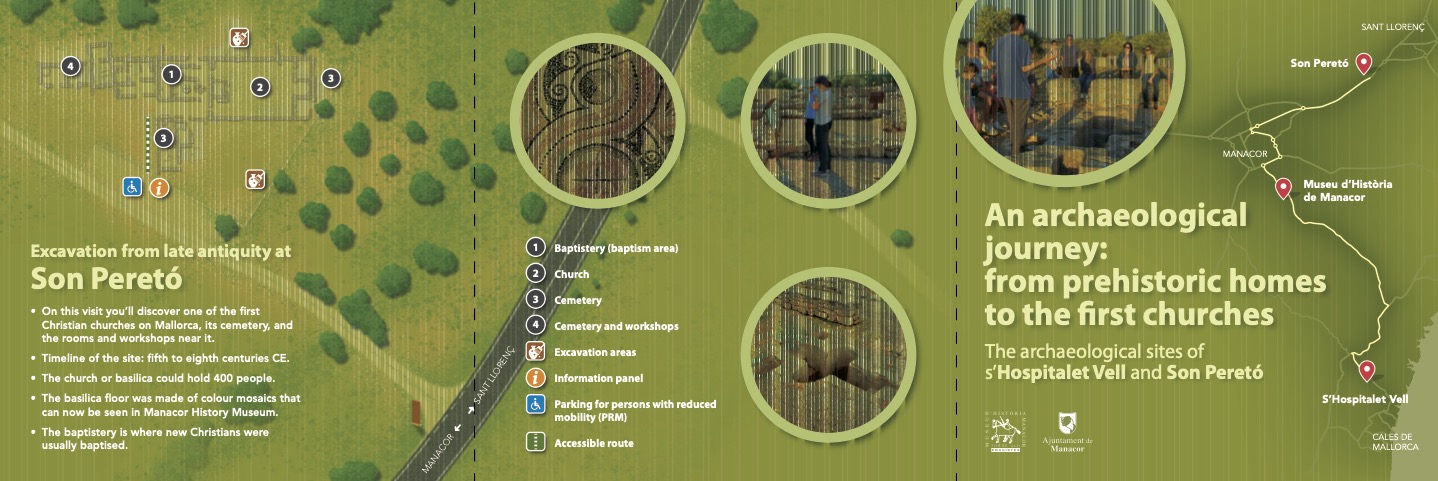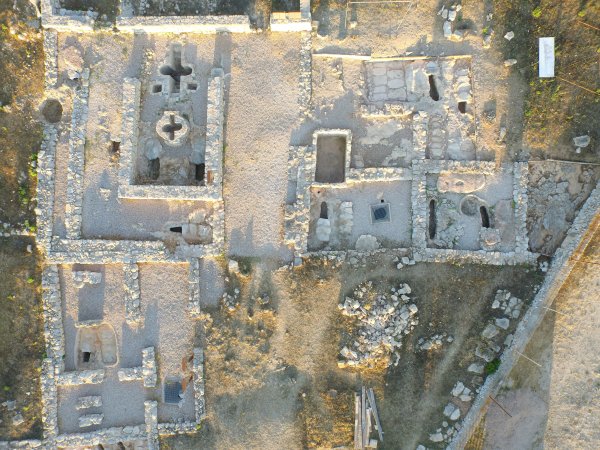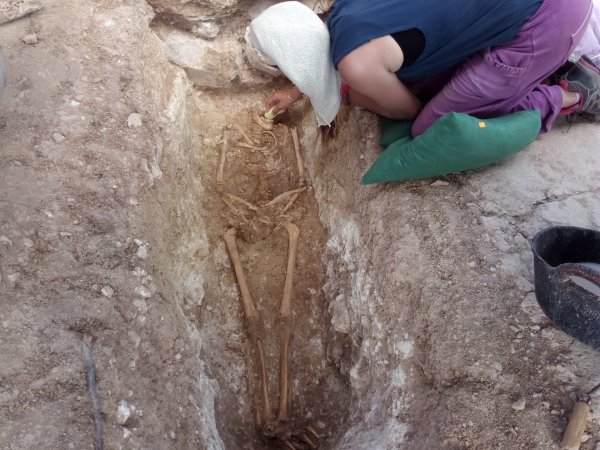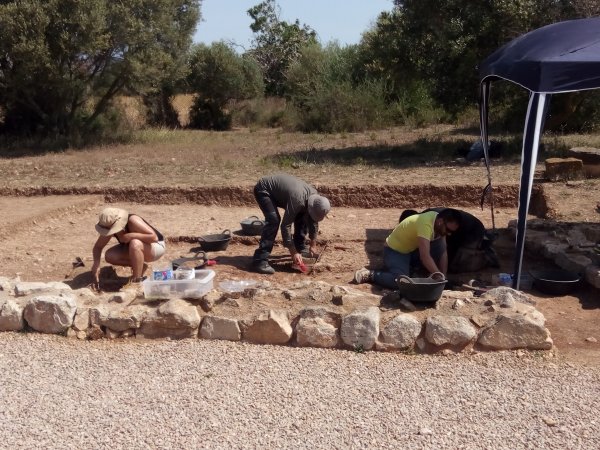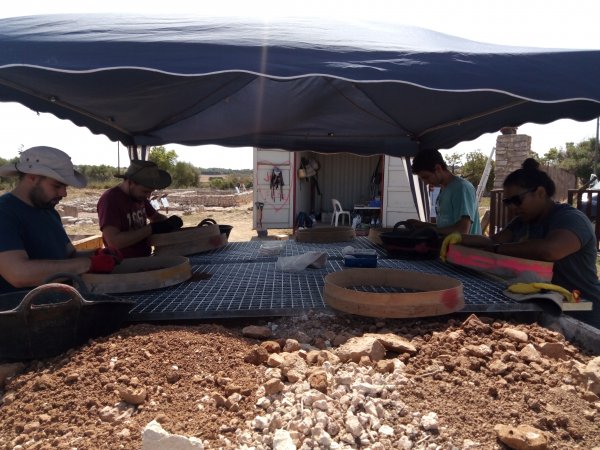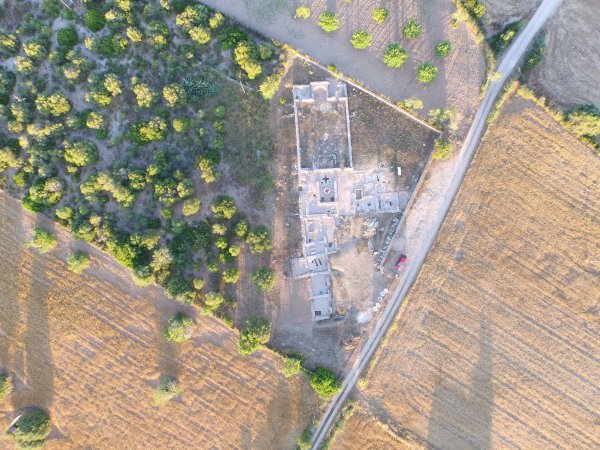Excavation from late antiquity at Son Peretó
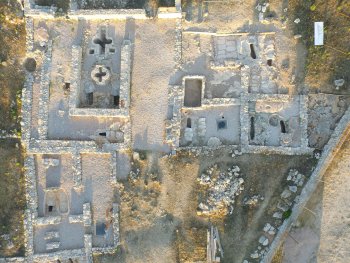
The excavation at Son Peretó is located on the road from Manacor to Sant Llorenç at Km. 6 from the Manacor town centre. Presently, it is being adapted for visits from the public. Access is free.
The first references to this site date back to 1912, when Mn. Aguiló initiated the excavation campaigns undertaken at Son Peretó. The site is comprised of a basilica, a baptistry, and a necropolis.
Visit the settlement with our progressive APP
The basilica, which has an east-west orientation, measures 21 x 14 metres. It contains three naves, with the central nave being separated from the lateral naves by a parade of columns. The main nave contained the sanatorium, where the altar was located. According to Mn. Aguiló, this stone altar has an interior cavity where the relics were kept, most certainly covered by a series of stone slabs or wooden foundations. Opposite the altar was the baptistry, where two baptismal fonts were discovered, the smaller one to the west and the larger one to the east, the latter perhaps of a somewhat later date, but both dating back to the 6th century. Mn. Aguiló also discovered the series of mosaics for which Son Peretó is famous. The studies undertaken on these mosaics by various researchers have revealed an iconographic wealth of subject matter, allowing us to chronologically situate the mosaics in the mid 6th century and to surmise their origin as being North African or Palestinian.
In the year 1967, other excavations were initiated under the authority of the Ministerial Department of Fine Arts and were carried out with technical assistance from the Balearic delegation of Service for the Defence of National Artistic Heritage. At the outset, these works consisted of the cleaning and reconnaisance of the grounds surrounding the basilica, with the aim of contrasting the new results with Mn. Aguiló’s old floor plans, and also as an initial survey on the possiblity of consolidating and restoring the mosaics at their place of origin – i.e., the basilica. The Catalan archaeologist, Pere de Palol, started the excavations again, focusing his work on a study of the basilica’s mosaics and fonts. In the year 1981, a team made up of the Museum of Majorca, the University of Palma, and the University of Barcelona finally clarified some of the mysteries of the site – for example, its chronology.
